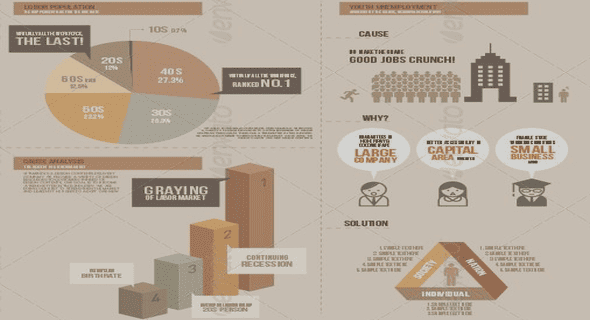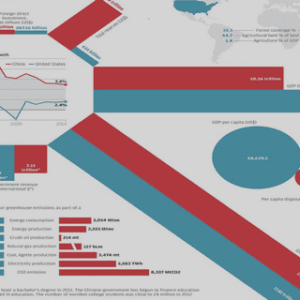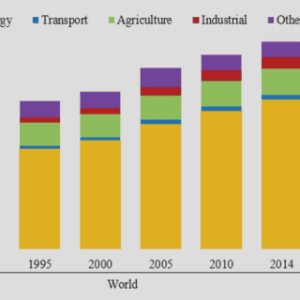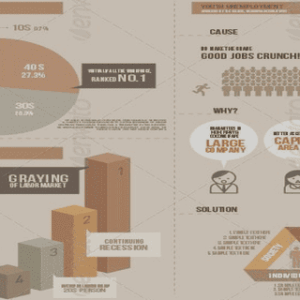(Downloads - 0)
For more info about our services contact : help@bestpfe.com
Table of contents
CHAPTER 1 IS FAMILY FARMING AN OPTION FOR FUTURE YOUTH EMPLOYMENT IN CAMBODIA?
1.1 Problem of the study
1.2 Farmer exclusion and job creation
1.3 Smallholder farming: structural constraints
1.4 Cambodia: demographic, employment and agrarian-nexus
1.5 Research questions
1.6 Youth definition applied in the study
1.7 Structure of dissertation
CHAPTER 2 THEORETICAL BACKGROUND, RESEARCH FRAMEWORK, AND METHODOLOGY
PART I. Theoretical background
2.1 Institutional Economics: Theory of Institutional Change
2.1.1 Concept of Institution
2.1.2 Institutional Change theory
2.2 Institutional change as process of problem solving
2.3 Family farm: as institution or organization
PART II. Theoretical framework
2.4 Existing theories explaining the change of family farming
2.5 Framework for successful and sustainable youth integration in farming
2.6 Framework for understanding the issue of integration youth in smallholding farming in this PhD study
PART III. Methodology
2.7 Research Design
2.7.1 The study area for the first survey
2.10.1.1 Site selection in Otdar Meanchey
2.10.1.2 Why three districts?
2.10.1.3 Site selection in Takeo province: why two districts?
2.10.1.3.1 Tram Kak commune
2.10.1.3.2 Prey Kabas commune
2.10.1.4 Social economic survey sample
2.10.1.5 Focus group discussion with youth
2.7.2 The case study on Young Agricultural Entrepreneur Project (YAE)
2.8 Economic calculation and data analysis
2.9 Some Ethical Considerations
2.9.1 Youth perception on farming
2.9.2 Economics data from YAE case study
2.9.3 Year of getting marriage
2.9.4 Typology of farm hosueholds
2.10 Analytical Framework
CHAPTER 3 UNDERSTANDING RURAL LIVELIHOOD AND SMALLHOLDING FARMING IN CAMBODIA
3.1 Historical setting of Otdar Meanchey and Takeo province
3.2 Socioeconomic diagnostics of rural households
3.2.1 Demographics
3.2.2 Education
3.2.2.1 Youth education
3.2.2.2 Children education (age below 14)
3.2.2.3 Household head‟s education
3.2.2.4 Youths currently studying
3.2.3 Migration and youth
3.2.4 Consumption and household expenditure
3.2.5 Income sources
3.2.6 Food security
3.2.7 Access to credit
3.2.8 Settlement in Otdar Meanchey and Takeo
3.2.9 Concluding remark
3.3 Non-farm activities
3.3.1 A short history of non-farm activities in Cambodia
3.3.2 The nature of non-farm activities in the three study areas
3.3.2.1 Five main categories of non-farm activities
3.3.2.2 Agricultural wage labour
3.3.2.3 Self-business
3.3.2.4 Salaried employment
3.3.2.5 Labor-based work
3.3.2.6 Migration
3.3.2.7 Income-based category of non-farm activities
3.3.3 Migration and non-farm farm income
3.3.3.1 Education of migrant
3.3.3.2 Migration as a temporal activity
3.3.3.3 Non-farm and migration income per person
3.3.3.4 Reason for migration and the use of remittance
3.3.4 View on non-farm activities
3.3.5 Concluding remarks
3.4 Description of agricultural activities
3.4.1 Biophysical environment in Otdar Meanchey and Takeo province
3.4.2 Rain-fed rice farming in Otdar Meanchey province
3.4.2.1 Rice cultivation
3.4.2.2 Annual crops
3.4.3.3 Vegetables
3.4.2.4 Regrouping annual crops and vegetables in Otdar Meanchey
3.4.2.5 Animal production
3.4.2.6 Common resource (CR)
3.4.2.7 Fruit Tree
3.4.2.8 Economic comparison of agricultural activities in Otdar Meanchey
3.4.3 Diversified rice farming system in Tram Kak
3.4.3.1 Rice cultivation
3.4.3.2 Annual crops
3.4.3.3 Vegetables
3.4.3.4 Regrouping Annual Crops and Vegetables in Tram Kak
3.4.3.5 Animal production
3.4.3.6 Common Resource in Tram Kak
3.4.3.7 Fruit Trees in Tram Kak
3.4.3.8 Economic comparison of agricultural activities in Tram Kak
3.4.4 Prey Kabas irrigated rice farming system
3.4.4.1 Intensified rice cropping in Prey Kabas
3.4.4.1.1 2R and 3R rice cropping
3.3.4.1.2 DR: water receding rice
3.3.4.1.3 HR: Late cycle rice or late season rice
3.3.4.1.4 Factors affecting the choice of 2R, 3R and HR
3.4.4.2 Annual crops in Prey Kabas
3.4.4.3 Vegetables in Prey Kabas
3.4.4.4 Regrouping Annual Crops and Vegetables
3.4.4.5 Animal production
3.4.4.6 Common Resources in Prey Kabas (CR)
3.4.4.7 Fruit Trees in Prey Kabas
3.4.4.8 Economic comparison of agricultural activities in Prey Kabas
3.4.5 Concluding remarks
3.5 Land Value Index
3.6 Minimum Surface for Sustainable Integration in Family Farming (MSI)
3.6.1 Calculating poverty line/minimum need per person per day or per year in USD
3.6.2 Defining the Minimum Surface for Integration in Farming
3.6.3 Land situation for possible youth integration
3.7 Diversity of household: A typology of farm households
3.7.1 Principle component analysis and cluster analysis
3.7.2 Farm type in Zone Tram Kak
3.7.2.1 Tram Kak PCA result and cluster analyses
3.7.2.2 Description of farm the typology in Tram Kak
3.7.2.3 Economic performance and livelihood strategy of each farm type in Tram Kak
3.7.2.4 Economic sustainability of farm type in Tram Kak
3.7.2.5 Farm capacity in comparison to poverty line in Tram Kak
3.7.3 Farm type in Prey Kabas
3.7.3.1 Prey Kabas PCA result and cluster analyses
3.7.3.2 Description of farm the typology in Prey Kabas
3.7.3.3 Economic performance and livelihood strategy of farm type in Prey Kabas
3.7.3.4 Economic sustainability of farm type in Prey Kabas
3.7.3.5 Farm capacity in comparison to the poverty line in Prey Kabas
3.7.4 Farm type in Zone Otdar Meanchey
3.7.4.1 Otdar Meanchey PCA result and cluster analyses
3.7.4.2 Description of farm typology in Otdar Meanchey
3.7.4.3 Economic performance and livelihood strategy of each farm type in Otdar Meanchey
3.7.4.4 Economic sustainability of farm type in Otdar Meanchey
3.7.4.5 Farm capacity in comparison to poverty line in Otdar Meanchey
3.7.5 Concluding remarks
3.8 Discussion
3.8.1 Socioeconomic conditions: farming have to accommodate more youth
3.8.2 Difficulty in looking for non-farm jobs link to low level of education
3.8.3 The degradation of farm economies and rural poverty: Farming as a safety net
3.8.4 Role of migration as a supplementary income to farming
3.9 Conclusion
CHAPTER 4: YOUTH INTEGRATION IN FAMILY FARMING IN CAMBODIA
4.1 Re-defining of youth in farming
4.1.1 Youth household
4.1.2 Adult household
4.2 Description of youth and adult household
4.2.1 Distribution of youth and adult household in each zone and type
4.2.2 Youth and adult household: land shared at marriage and current land
4.2.3 Economics characterization of youth and adult household
4.2.3.1 Tram Kak youth and adult
4.2.3.2 Prey Kabas youth and adult
4.2.3.3 Otdar Meanchey youth and adult
4.3 Analysis youth integration capacity
4.3.1 Defining youth integration capacity
4.3.2 Youth integration capacity in each zone by farm type
4.3.2.1 Capacity youth integration in Tram Kak
4.3.2.2 Capacity youth integration in Prey Kabas
4.3.2.3 Capacity youth integration in Otdar Meanchey
4.3.3 Economic capacity of youth integration in each farm type
4.3.3.1 Zone Tram Kak
4.3.3.2 Zone Prey Kabas
4.3.3.3 Zone Otdar Meanchey
4.4 Household strategy for future youth
4.4.1 Investment in children education
4.4.2 Integration into farming under the MSI
4.4.3 Integration under the form of generation transfer
4.4.4 Migration to zone pioneer to seek for agricultural land
4.4.5 Farm trajectory Tram Kak, Prey Kabas and Otdar Meanchey
4.5 Discussion
4.5.1 Factor of enable and unable
4.5.2 Land amortization of land/sub division of land
4.5.3 Land is main challenge for future youth integration
4.5.4 Small holder farming is safety-net
4.5.5 Sustainable integration in farming need a complementary from non-farm
4.6 Conclusion
CHAPTER 5: INSTITUTIONAL DIMENSION FOR SUSTAINABLE YOUTH INTEGRATION IN CAMBODIAN FAMILY FARMING
5.1 Introduction
5.2 Perception on farming
5.2.1 Theory explaining perception
5.2.2 Single youth perception and aspiration toward farming
5.2.3 Family perception on agriculture
5.2.3.1 General opinion on agriculture
5.2.3.2 Is it easy to start farm work?
4.2.3.1 It is not easy to get land clear in zone pioneer like Otdar Meanchey
4.2.3.2 Traditional knowledge is no longer applicable when rice is more intensified256
4.2.3.3 Experience determines the view on the easiness of starting up farm work
5.2.3.3 Do you think agriculture is a good option for employment?
5.2.3.4 Do you intend to hand over your farm to children?
5.3 Institutional dimension in support youth integration in farming
5.3.1 Role of existing CBOs in the survey
5.3.2 NGOs Intervention: Case study of CEDAC‟s YAE program
5.3.2.1 Very few attempts to test youth integration program in farming
5.3.2.2 CEDAC and young agricultural entrepreneur program
5.3.2.3 To leave or to stay: Lesson learnt from CEDAC
5.3.2.3.1 A life story: Motivation to start up farming as experience from trial migration
5.3.2.3.2 Motivation to quit farming after farming trail: A livelihood economy tell 264
5.3.2.3.3 Those who stay combining active labor with family or non-farm activities267
5.3.2.3.4 Will they return back to farming?
5.3.3.4 Youth‟s challenge in YAE: Lesson learnt
5.3.3.4.1 Youth‟s complex social characteristic: Development intervention disappointment?
4.3.3.4.2 There is no showcase that farming is high profitable
4.3.3.4.3 No financial support setting up farming: Is CEDAC rational?
4.3.3.4.4 Access to market
5.3.4 Existing policy in supporting youth integration in farming
5.4 Factors determine youth to settle in farming
5.4.1 Generation born and land access
5.4.2 Political integration at different time impacted on different integration in farming
5.4.3 Low level of education determines young people’s choice of farming
5.4.4 Gender and way of household subdivide land to children
5.4.5 Non-farm job is not easily accessible: Knowledge and skill demand but competition
5.4.5 Couple strategy
5.4.6 Investment in children education
5.5 Discussion and conclusion
CHAPTER 6: THE FUTURE PROSPECTS FOR YOUTH INTEGRATION IN FAMILY FARMING IN CAMBODIA SYNTHESIS OF STUDY RESULTS AND CONCLUSION
6.1 Economic sustainability of farming need a complementary from non-farm activities .
6.2 Motivation, perception on farming: to leave or to stay
6.3 Future prospect of youth and Cambodian family farming
REFERENCE




